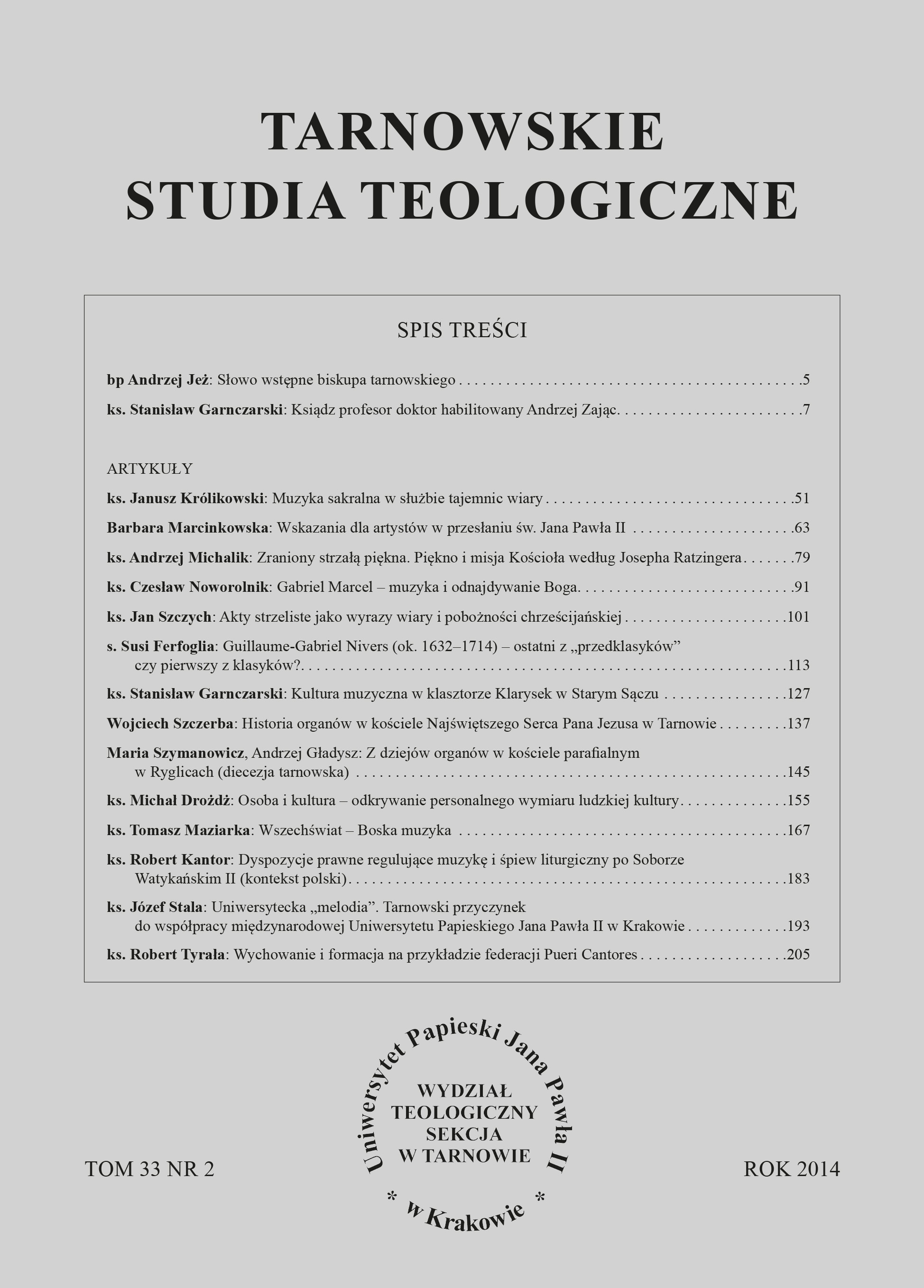Ejaculatory prayers (ejaculations) as an expression of christian faith and piety
DOI:
https://doi.org/10.15633/tst.688Keywords:
prayer of aspiration, ejaculatory prayer, pious invocations, piety, devotion, prayer, expression of faithAbstract
Enchiridion indulgentiarum of Vatican treats, among others, of prayers of aspiration (aspirations), commonly called ejaculatory prayers (ejaculations), which are complements to individual indulgences. According to the document, an ejaculatory prayer is usually very short, expressed verbally or as a thought and as such externalizes a Christian’s internal attitude.
Among pious invocations, it is possible to distinguish prayers which spontaneously flow from within a believer’s inside and those that have been confirmed by worshippers’ long practice or are customarily acknowledged. A collection of these prayer formulas as well as reflection on their content shows not only a believer’s individual piety but also portrays a praying person’s depth of consciousness of salvational occurrences. Thus, aspirations, whilst preserving their simplicity and expressiveness of significance, become a believer’s undisputed proof of faith and devotion.
Downloads
Published
Issue
Section
License
Authors who publish with this journal agree to the following terms:
- Authors retain the copyright and full publishing rights without restrictions, and grant the journal right of first publication with the work simultaneously licensed under a Creative Commons Attribution 4.0 International License that allows others to share the work with an acknowledgement of the work's authorship and initial publication in this journal.
- Authors are able to enter into separate, additional contractual arrangements for the non-exclusive distribution of the journal's published version of the work (e.g., post it to an institutional repository or publish it in a book), with an acknowledgement of its initial publication in this journal.
- Authors are permitted and encouraged to post their work online (e.g., in institutional repositories or on their website) prior to and during the submission process, as it can lead to productive exchanges, as well as earlier and greater citation of published work (See The Effect of Open Access).

